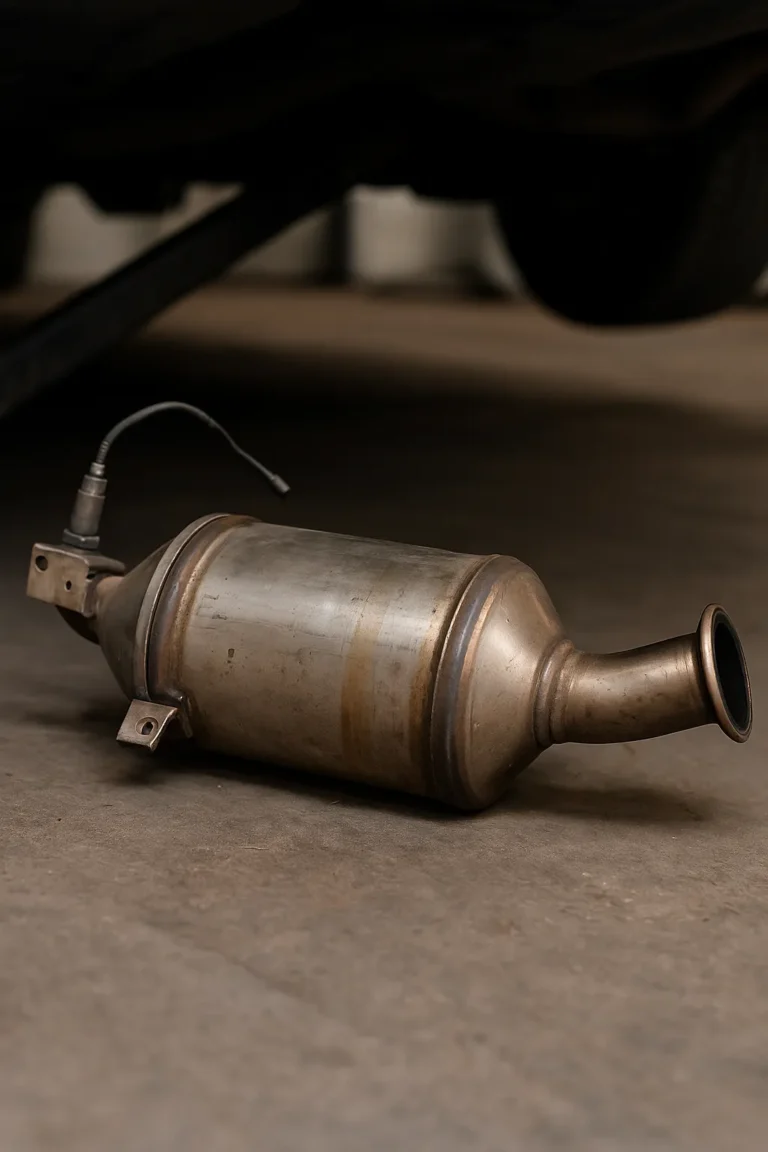Introduction
Table of Contents
ToggleSigns Your DPF Requires Replacement play a crucial role in modern diesel engines, reducing harmful emissions and ensuring compliance with environmental regulations. Over time, however, these filters can become clogged or damaged, affecting engine performance and efficiency. Recognizing when your DPF needs replacement is essential for maintaining your vehicle’s health and functionality. In this comprehensive guide, we’ll explore three key indicators that signal your DPF may require replacement, along with actionable insights to help you navigate this process effectively.
1. Decreased Fuel Efficiency and Engine Performance

One of the earliest signs that your DPF might need replacement is a noticeable decline in fuel efficiency and engine performance. DPFs operate by trapping and periodically burning off particulate matter collected from the exhaust gases. As the filter becomes clogged with soot and ash over time, it restricts the flow of exhaust gases, causing the engine to work harder to maintain performance.
- Understanding DPF Functionality and Impact on Fuel Efficiency:
- DPFs trap microscopic particles produced during diesel combustion, preventing them from being released into the environment.
- Clogging reduces exhaust flow, forcing the engine to burn more fuel to maintain power levels, leading to decreased fuel efficiency.
- Monitoring engine performance metrics such as acceleration times and fuel consumption can provide early clues to DPF degradation.
- Symptoms to Watch For:
- Increased fuel consumption without a corresponding increase in engine power.
- Sluggish acceleration and reduced responsiveness when accelerating.
- Engine misfires or hesitation during acceleration due to restricted exhaust flow.
- Diagnostic Steps:
- Use diagnostic tools to monitor DPF efficiency and assess the level of particulate accumulation.
- Conduct regular vehicle maintenance checks to identify early signs of reduced fuel efficiency and engine performance.
2. Persistent Warning Lights and Regeneration Issues
Modern vehicles equipped with DPFs are designed to alert drivers when the filter requires regeneration or when there’s a fault with the DPF system itself. Ignoring these warning signs can lead to severe damage to the engine and exhaust system components.
- Understanding DPF Regeneration:
- Regeneration is the process by which accumulated soot in the DPF is burned off at high temperatures to restore filter efficiency.
- Passive regeneration occurs during normal driving conditions, while active regeneration may be initiated by the vehicle’s engine control unit (ECU) to burn off accumulated soot.
- Persistent warning lights, such as the DPF light or engine management light, indicate issues that require immediate attention to prevent further damage.
- Symptoms to Watch For:
- DPF warning light illuminated on the dashboard.
- Engine management light (EML) indicating DPF-related faults or issues.
- Difficulty completing regeneration cycles, resulting in incomplete or failed regenerations.
- Diagnostic Steps:
- Use diagnostic tools to retrieve fault codes stored in the vehicle’s ECU.
- Monitor DPF regeneration cycles to identify issues with soot accumulation and regeneration efficiency.
- Address underlying issues promptly to prevent prolonged exposure to warning lights and potential engine damage.
3. Unusual Exhaust Smoke and Smell

Another critical indicator that your DPF may require replacement is the presence of unusual exhaust smoke and odors. As DPFs become clogged or damaged, they may fail to effectively filter exhaust gases, leading to abnormal emissions characteristics.
- Understanding Exhaust Characteristics:
- Normal diesel exhaust should be relatively clean and free of visible smoke under typical operating conditions.
- A clogged DPF may cause excessive smoke emissions, ranging from white or grey smoke (indicative of coolant or oil contamination) to black smoke (indicative of incomplete combustion).
- Unusual exhaust odors, such as a burning smell or sulfur-like odor, may indicate DPF malfunction or failure.
- Symptoms to Watch For:
- Excessive smoke emissions during acceleration or under load conditions.
- Persistent odor emissions from the exhaust system, indicate incomplete combustion or DPF malfunction.
- Visible soot deposits around the exhaust pipe or DPF housing, indicating potential leaks or clogging.
- Diagnostic Steps:
- Perform a visual inspection of the exhaust system for signs of soot buildup or leaks.
- Use emissions testing equipment to analyze exhaust gas composition and identify abnormal emission characteristics.
- Address underlying issues promptly to prevent further damage to the DPF and ensure compliance with emissions regulations.
Conclusion
Recognizing the signs that your Diesel Particulate Filter (DPF) requires replacement is crucial for maintaining your vehicle’s performance, efficiency, and compliance with emissions standards. By monitoring fuel efficiency, engine performance, warning lights, and exhaust characteristics, you can identify early indicators of DPF degradation and take proactive steps to address them. Regular maintenance, timely repairs, and informed decision-making when replacing your DPF will help extend the lifespan of your vehicle’s exhaust system and ensure optimal engine performance for years to come.



